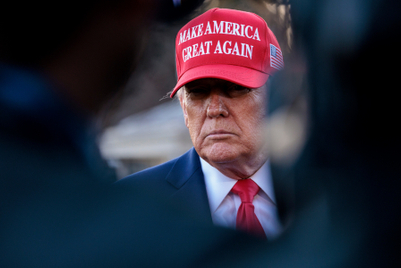
The report is based on quantitative surveys conducted throughout the year in the US and the UK as well as qualitative input from nearly 70 JWT planners across 24 markets, including India, China, Japan, Malaysia, the Philippines, Pakistan, Thailand, Sri Lanka and New Zealand. JWT’s researchers also interviewed experts and influencers across sectors including technology, health and wellness, retail, media and academia.
Play as a competitive advantage
No longer regarded as a time-waster, play will find more support among adults who recognise that unstructured play balances out today’s plethora of organised and tech-based activities, predicts JWT. For example, Spacious, a recently formed organization in Washington, DC, champions the idea of adult play and has sponsored events such as an “adult recess” that included pie-throwing and games of Twister, said the report.
Brands will benefit from this growing sentiment by encouraging consumers to see their day-to-day environment through a more playful lens, which also negates guilt by encouraging beneficial activies. Nike's Fuel Band, for example, turns daily activities into a point-scoring game that counts toward personal fitness.
The super stress era
The attitude to play is likely in response to mounting and multiplying stressors faced by society today, largely brought on by economic pressure, the buzz of today's always-on culture and hyper competition that comes with a global marketplace. “As stress gets more widely recognized as both a serious medical concern and rising cost issue, governments, employers and brands alike will need to ramp up efforts to help prevent and reduce it,” according to the report.
Brands, the report authors wrote, can become catalysts for stress reduction. Outdoor brand the North Face, for example, tapped this insight with a campaign in China advocating that people escape—if only for a weekend—to nature.
There has also been an increase of stress-reduction food and beverages, with ingredents such as kava root, L-theanine (an amino acid found in tea plants), melatonin and the herb valerian, variously said to ease anxiety and aid sleep and relaxation. Nearly 400 relaxation drinks were on the market as of 2011 according to an IBISWorld report, among them Mini Chill, iChill, Drank, Vacation in a Bottle and Slow Cow, which refers to itself as the “anti-energy drink.”
Intelligent objects
The internet of things is finally mainstream, with more and more ordinary items becoming interactive, intelligent objects. One example is Oakley’s new Airwave goggles with GPS sensors, Bluetooth and a display for skiers to track personal performance and read text messages or emails.
The goal for brands is to use technology in a way that makes it invisible, with experience the defining feature. "Technology is evolving from a clunky add-on, becoming more seamlessly integrated into or layered onto our lives," the report said.
Predictive personalization
With speedier and more affordable data-analysis available, brands will increasingly be able to predict customer behaviour, needs or wants—and tailor offers and communications precisely.
British Airways, for example, relies on a database of passenger info it gathered from many sources over the course of several years to give highly personalized “Know Me” service to its VIP frequent flyers.
The mobile fingerprint
Smartphones are growing increasingly indispensible, evolving into our wallets and even keys. Soon, predicts JWT, they will become our de facto fingerprints.
A commercial from Indian telecom Idea Cellular floats the idea that a mobile number can serve not only as an identifier but also as an equalizer, with the head of a fictional town council declaring that to end name-calling and fighting over caste status, people will be identified by their mobile numbers.
As the smartphone assumes these new roles and in essence evolves into an identity hub, consumers will become more dependent on their phones, both emotionally and practically, observed the report. Retailers, handset manufacturers, telecom providers, software developers and other marketers will need to consider how the consumer’s increasingly intimate connection to the phone will change behaviours, sensitivities and mindset.
Everything is retail
Shopping is shifting from an in-store, physical activity to one that can take place just about anywhere at any time, largely thanks to mobile technology. For example, during 2012’s holiday shopping period, Mattel and Walmart Canada created a “virtual pop-up toy store” in Toronto's underground walkway, featuring two walls of 3D toy images accompanied by QR codes—similar to Cheil’s virtual Tesco stores.
By and large though, this method is experimental, with retailers having to discover what resonates and how consumers adjust their behaviour given new options, said the report. IBM’s Jill Puleri noted in the study that in the UK, Tesco has found that many “click and collect” customers shop in-store after picking up items ordered online—frequently bulkier, heavier items that they appreciate having preloaded into their car. “You just don’t know until you actually implement it that consumers are not doing all their purchasing on ‘click and collect,’” she says.
Sensory explosion
In response to the increasing encroachment of technology into our everyday lives, consumers will place a premium on sensory stimulation and authentic experiences. This trend offers creative opportunities for brands to grab consumer attention. And they will need to do so, observed the report, as people come to expect ever more amped-up sights, sounds and tastes.
Dunkin' Donuts and Cheil Worldwide for example, saw success from installing aromatisers in buses around Seoul that released the scent of freshly brewed coffee whenever the brand’s jingle was played.
Also, retail outlets will gradually transition to showrooms that emphasise experiences over selling as online commerce continues to grow.
Peer power
While online peer-to-peer networks date back at least to the early days of eBay and Napster in the 1990s, the market is now expanding well beyond goods into services, impacting hospitality and tourism services for example, observed JWT. Consider that Airbnb booked 5 million guest nights in the months between late January and June 2012—equivalent to the number it booked in the years between its launch in August 2008 and January 2012, the report noted.
The instinct for established players will be to turn to existing laws and regulations to limit the growth of P2P companies. However, history suggests that fighting peer-to-peer models is a flawed approach, as evidenced by the music industry, according to the report.
Instead, brands should look at how P2P services may help to grow a market. Venture capitalist Chris Fralic noted in the study that Airbnb may be widening the market for travel, with its cheaper, more varied accommodations. Getting more people passionate about travel is ultimately good for many businesses.
Going public in private
As living life publically becomes a default, people are increasingly conscious of controlling their personal online brand and have, in turn, come up with ways to carve out private spaces in their lives. For example, Argentina’s Norte Beer gained recognition for its Photoblocker beer cooler, distributed to local bars as part of its “What happens in the club stays in the club” campaign. When it detects the flash from a photo, the cooler emits a bright light, making potentially incriminating images unusable.
Health and happiness
Less about vanity and toned abs, health is now increasingly viewed to be about happiness, with the rising notion that a happier person is a healthier person—and, in turn, a healthier person is a happier person. Channeling this idea, Nestlé Australia’s “Happily Healthy Project” is a bid to educate consumers about the health-happiness link. The campaign’s website lets users take a test to measure their HHQ, or Happily Healthy Quotient.
Brands have many opportunities to reframe motivation, JWT said. For brands that can bring happiness, emphasizing a health aspect will help create a one-two punch. And for brands that are health-related, it may be just as or more effective to tout the happiness effects above the medical benefits.
The article first appeared on Campaign Asia


.jpg&h=334&w=500&q=100&v=20250320&c=1)
.jpg&h=334&w=500&q=100&v=20250320&c=1)



.jpg&h=334&w=500&q=100&v=20250320&c=1)
.jpg&h=334&w=500&q=100&v=20250320&c=1)


.jpg&h=334&w=500&q=100&v=20250320&c=1)





.jpg&h=268&w=401&q=100&v=20250320&c=1)


